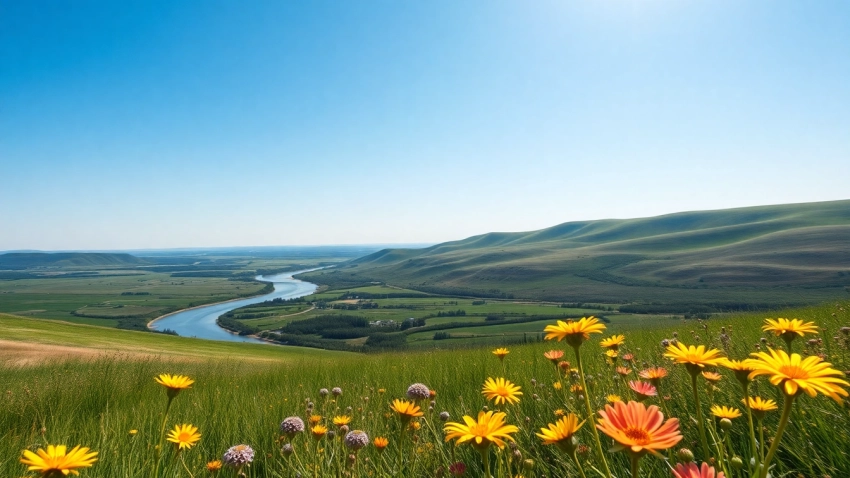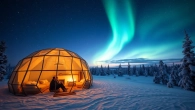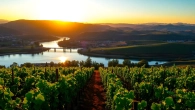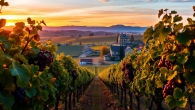
Uncover the Natural Beauty and Rich Culture of Manitoba
Introduction to Manitoba
Welcome to Manitoba, a province rich in cultural heritage, scenic beauty, and vibrant communities. Nestled in the heart of Canada, Manitoba offers a mosaic of experiences that captivates residents and visitors alike. Its diverse landscape stretches from the windswept plains of the prairies to the rugged beauty of its northern regions, making it a unique destination for those seeking both adventure and tranquility. As you explore this enchanting province, you’ll find distinct traditions, warm hospitality, and a wealth of attractions waiting to be discovered. Whether you are planning a visit or simply curious about this region, you are encouraged to learn more about Manitoba and its wonders.
Geography and Climate of Manitoba
Geographical Features
Manitoba is characterized by its vast and varied landscapes. The province can be divided into several geographical regions:
- The Prairie Region: Dominating the southern part of Manitoba, this area features flat plains interspersed with farms, towns, and small cities.
- The Canadian Shield: Situated in the eastern and northern parts, this rugged area consists of ancient rock formations, lakes, and forests.
- The Northern Region: A place of natural wilderness, home to diverse wildlife and pristine lakes, largely untouched by urban development.
Climate Considerations
The climate in Manitoba exhibits the characteristics of a continental climate, with four distinct seasons. Summers are warm to hot, while winters are notoriously cold and lengthy. The province experiences marked seasonal variations, making it crucial to plan your activities with the weather in mind:
- Summer: Enjoy activities like hiking, camping, and visiting festivals under sunny skies.
- Autumn: The vibrant fall colors are perfect for sightseeing, especially in natural areas.
- Winter: Ideal for those who enjoy snow sports such as skiing, skating, and snowmobiling.
- Spring: A time for rejuvenation with blooming landscapes and opportunities for outdoor exploration.
Cultural Significance of Manitoba
Indigenous Heritage
Manitoba is home to a rich tapestry of Indigenous cultures, languages, and traditions. Indigenous groups, including the Anishinaabe, Cree, Dakota, and Métis, have lived on this land for thousands of years, shaping the history and identity of the province. Their languages are a crucial aspect of the cultural heritage:
- Languages: Michif, Cree, and Ojibwe are among the prominent Indigenous languages spoken in Manitoba.
- Cultural Practices: Powwows, traditional storytelling, and art are vital parts of maintaining cultural continuity.
Contributions to Arts and Traditions
Manitoba is also a hub of artistic expression, with numerous festivals celebrating music, dance, and arts. The Winnipeg Folk Festival, the Manitoba Museum, and the Canadian Museum for Human Rights are pivotal venues that showcase the province’s diverse cultural scene. Local artists and creators often draw inspiration from the stunning landscapes and profound history surrounding them, leading to a dynamic arts community.
What Makes Manitoba Unique?
Culinary Delights
The gastronomy of Manitoba reflects its diverse cultural influences. From traditional Indigenous dishes such as bison stew and wild rice to modern fusion cuisine found in its restaurants, diners can enjoy a taste of Manitoba’s heritage. Local ingredients play a significant role in this culinary identity, with many chefs committed to sourcing from local farms.
Festivals and Events
Throughout the year, Manitoba hosts a variety of vibrant festivals that celebrate its cultural diversity:
- The Festival du Voyageur: Celebrating French-Canadian culture with music, arts, and festivities.
- Indigenous Peoples Day: A celebration of Indigenous culture, showcasing traditional performances and contemporary art.
- Manitoba Electronic Music Exhibition: Highlighting electronic music, art, and technology.
Exploring Manitoba’s Natural Wonders
Must-Visit Natural Parks in Manitoba
Manitoba boasts an impressive array of natural parks and reserves, offering unmatched opportunities for outdoor enthusiasts:
- Riding Mountain National Park: A sanctuary of ecological diversity, featuring hiking trails, camping sites, and abundant wildlife.
- Wapusk National Park: Known for polar bear sightings, this park provides a unique glimpse into the life of these majestic creatures.
- Spruce Woods Provincial Park: A diverse ecosystem that features picturesque landscapes, hiking trails, and recreational activities for families.
Wildlife and Biodiversity in Manitoba
The province is a hotspot for wildlife enthusiasts. Its diverse habitats are home to many species:
- Birdwatching: Manitoba is a key migratory route, making it a haven for birdwatchers, especially during the spring and fall.
- Migratory Species: Species like the American white pelican and the whooping crane utilize Manitoba’s wetlands.
- Mammals: Large mammals such as moose, bison, and black bears roam freely, offering memorable encounters to those lucky enough to spot them.
Outdoor Activities in Manitoba
With its stunning landscapes, Manitoba provides endless opportunities for outdoor activities, ensuring both adventure and relaxation:
- Hiking and Biking: Various trails, including those in provincial parks, are well-marked for biking and hiking enthusiasts.
- Water Sports: Fishing, canoeing, and kayaking on Manitoba’s expansive waterways draw many thrill-seekers throughout the warmer months.
- Winter Sports: Snowshoeing, skiing, and ice fishing are popular in the colder months, attracting adventurers to explore the snowy landscape.
The History and Heritage of Manitoba
Indigenous People of Manitoba
The historical journey of Manitoba cannot be told without acknowledging its Indigenous roots. Each group has a rich and storied history that predates European contact:
- Traditional Lifestyles: Indigenous peoples thrived through hunting, gathering, and trade networks that connected various communities.
- Colonization Impact: The arrival of European settlers brought significant changes to Indigenous ways of life, impacting their land and cultural practices.
Historical Events Shaping Manitoba
Several key events have shaped the social and political landscape of Manitoba:
- The Red River Resistance: Led by Louis Riel, this pivotal event highlighted the rights of the Métis people and established the province of Manitoba as we know it today.
- Immigration Waves: The 19th and 20th centuries saw large waves of immigrants settle in Manitoba, contributing to its vibrant multicultural society.
Unique Traditions in Manitoba
Manitoba’s varied cultural influences have led to some fascinating traditions and events, such as:
- The Métis Jig: This traditional dance showcases the vibrant history of the Métis culture.
- Traditional Powwows: A celebration of Indigenous culture featuring dance, music, and storytelling.
Economic Landscape of Manitoba
Key Industries in Manitoba
Manitoba’s economy is diverse and robust, with various industries contributing to its growth:
- Agriculture: Heavily influences the economy, with the province being one of Canada’s leading agricultural producers.
- Manufacturing: A diverse sector ranging from food processing to transportation equipment.
- Finance and Insurance: Financial services play a critical role in the province’s economic framework.
Employment Opportunities in Manitoba
The job market in Manitoba reflects its economic diversity, offering opportunities in numerous sectors:
- Technical Careers: The tech industry is growing, leading to increased demand for skilled workers.
- Health Care: There is a constant need for healthcare professionals, particularly in rural areas.
Economic Developments in Manitoba
Manitoba is actively investing in its infrastructure and technology to enhance economic growth:
- Green Initiatives: To foster an eco-friendly economy, the province is promoting sustainable practices across various sectors.
- Business Development Programs: These programs support startups and encourage innovation to bolster job creation.
Tourism and Travel in Manitoba
Top Tourist Attractions in Manitoba
Tourism is a key component of Manitoba’s economy, with a range of attractions drawing visitors from all over:
- The Forks: A historic site and cultural hub in Winnipeg, known for its markets, restaurants, and outdoor spaces.
- Assiniboine Park: Combining nature and culture, the park features gardens, a zoo, and various cultural institutions.
- Canadian Museum for Human Rights: A unique architectural masterpiece that promotes understanding and respect.
Seasonal Events and Festivals in Manitoba
Manitoba’s festivals and events attract tourists year-round:
- Winnipeg Jazz Festival: Celebrating the rich tradition of jazz music in a variety of venues.
- Manitoba Stampede: A celebration of cowboy culture, featuring rodeos and equestrian events.
Travel Tips for Visiting Manitoba
旅行者 should prepare to explore Manitoba effectively:
- Best Times to Visit: Consider visiting during late spring to early fall for pleasant weather and outdoor activities.
- Transportation: Renting a car can provide greater flexibility when exploring rural areas beyond urban centers.
- Local Customs: Engaging with local communities and respecting cultural traditions is vital for a rewarding travel experience.












Leave a Reply